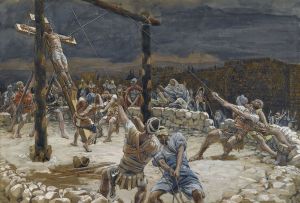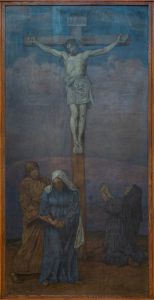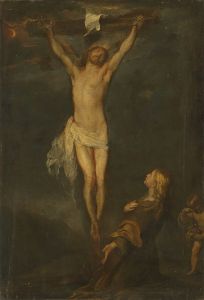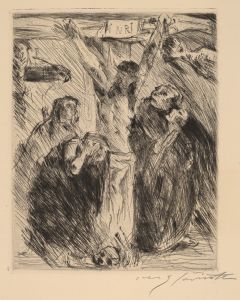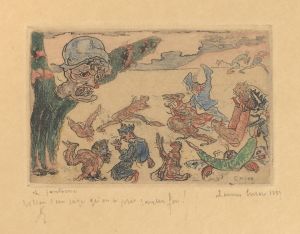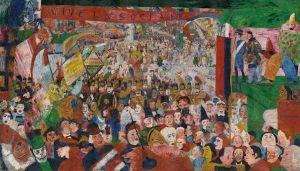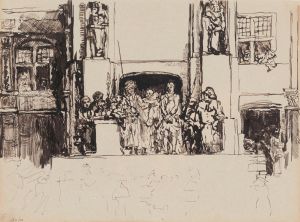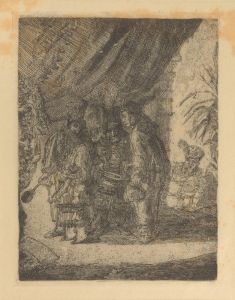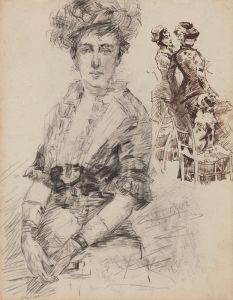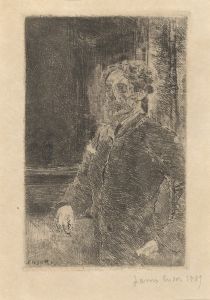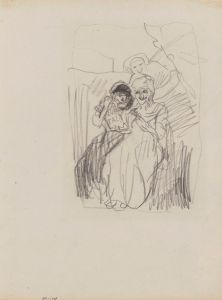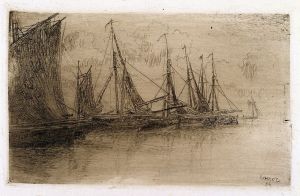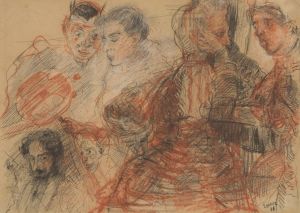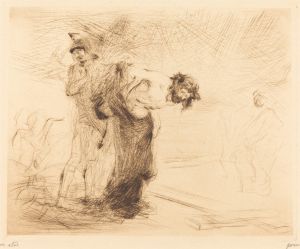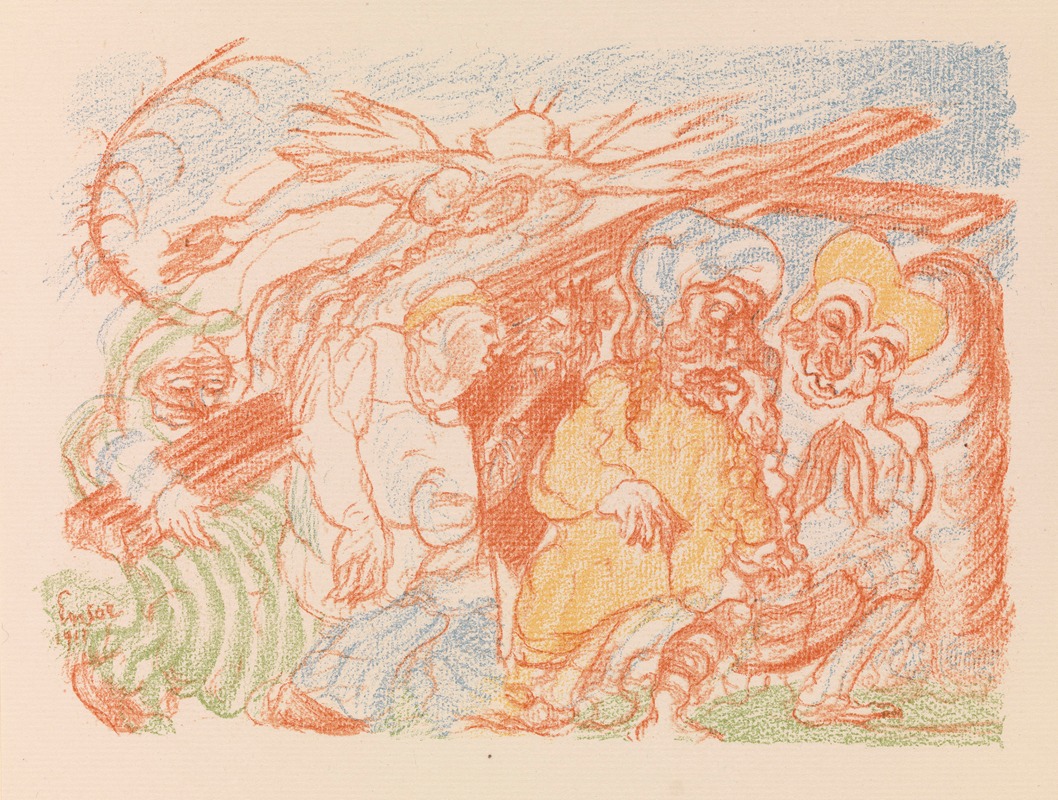
Calvary
A hand-painted replica of James Ensor’s masterpiece Calvary, meticulously crafted by professional artists to capture the true essence of the original. Each piece is created with museum-quality canvas and rare mineral pigments, carefully painted by experienced artists with delicate brushstrokes and rich, layered colors to perfectly recreate the texture of the original artwork. Unlike machine-printed reproductions, this hand-painted version brings the painting to life, infused with the artist’s emotions and skill in every stroke. Whether for personal collection or home decoration, it instantly elevates the artistic atmosphere of any space.
James Ensor's Calvary is a painting created in 1886 by the Belgian artist, who is widely recognized for his unique and often provocative style. Ensor was a key figure in the Symbolist movement and a precursor to Expressionism, known for his vivid imagination and use of bold, unconventional imagery. Calvary is one of his works that reflects his interest in religious themes, a recurring subject in his oeuvre.
The painting depicts the crucifixion of Christ, a central event in Christian theology. Ensor's interpretation of this scene, however, diverges from traditional depictions. While many artists have portrayed the crucifixion with solemnity and reverence, Ensor's version is marked by a chaotic and grotesque atmosphere. The composition is crowded with figures, many of whom are caricatured or grotesque in appearance, reflecting Ensor's critical view of humanity and society. The crowd surrounding Christ is often interpreted as a representation of the hypocrisy, cruelty, and absurdity Ensor perceived in the world around him.
Ensor's use of color in Calvary is striking. He employs a palette that includes bright, almost garish hues, which contribute to the unsettling and surreal quality of the scene. This approach to color and form was innovative for its time and helped to establish Ensor as a pioneer of modern art. The painting also demonstrates Ensor's skill in blending traditional religious iconography with his own distinctive, often satirical vision.
Calvary is part of Ensor's broader exploration of themes such as mortality, suffering, and the human condition. His works often challenge viewers to confront uncomfortable truths about society and themselves. While Ensor's art was not widely appreciated during his lifetime, his influence on later movements, including Expressionism and Surrealism, is now well-recognized.
The painting is housed in the Royal Museum of Fine Arts in Antwerp, Belgium, which holds a significant collection of Ensor's works. This institution has played a key role in preserving and promoting Ensor's legacy as one of Belgium's most important artists.
Calvary remains a powerful example of Ensor's ability to combine traditional subject matter with a modern, critical perspective, making it a significant work in the history of Western art.





